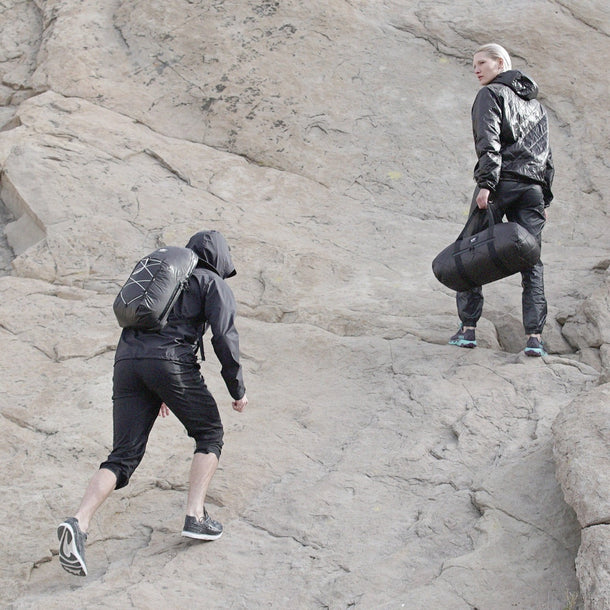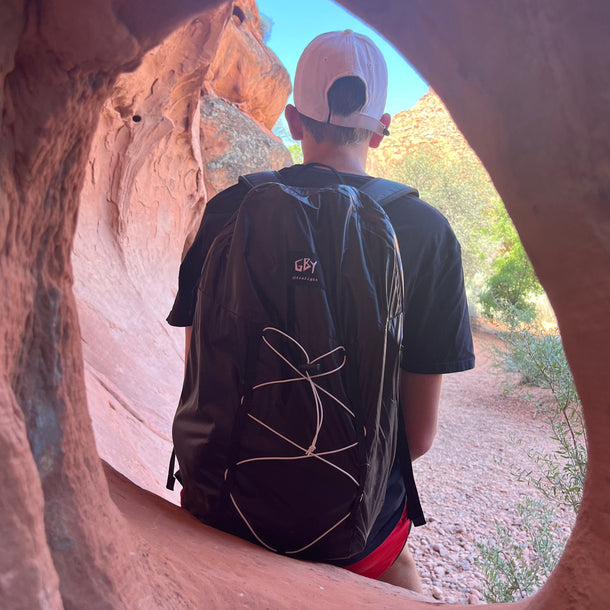Introduction
Climbing demands precision: every hold counts, every gram adds up. Whether you're heading up a sport route, trad crag, or alpine wall, your rucksack becomes more than a pack—it’s your mobile gear closet. Ultralight rucksacks remove the burden, giving you freedom to move, switch routes, and focus on technique rather than shoulder strain. For commuters, digital nomads, and weekend climbers alike, the same desire holds: efficient, durable design with weight kept to a minimum.
Why Ultralight Rucksacks Matter for Climbing
-
Reduced fatigue on approach & descent. Carrying gear over sharp terrain or steep slopes is easier when your pack is light.
-
Improved agility & movement. A lighter rucksack means less inertia, helpful when balancing or maneuvering with gear, helmet, shoes.
-
Versatility beyond the crag. A well-designed ultralight rucksack can double as an urban daypack (think: commuting, travel).
-
Mental clarity. Fewer distractions from bulk, better organization so you aren’t rummaging around when the cliff face awaits.
What Makes a Good Ultralight Rucksack for Climbing Gear (H2)

When selecting a rucksack for climbing, these are the features and design decisions that matter.
Materials & Durability (H3)
-
Choose ripstop nylon or ultralight waterproof fabrics to resist abrasions from rocks and sharp carabiners.
-
Reinforced bottom panels help prevent wear from crampons and boots.
-
Quality zippers (e.g. YKK) with water resistance help with wet or snowy approaches.
Weight vs Capacity (H3)
-
Assess what you need: rope, helmet, shoes, quickdraws, harness, water, clothing. Only bring essentials.
-
A pack that’s too large will encourage you to fill it; too small may force you to leave gear behind or cram it badly.
-
Seek lightweight construction, minimal framing (if any), and smart trim.
Structure & Access (H3)
-
Top-loading vs panel loading: for climbing, being able to reach gear quickly (rope, protection) matters.
-
External lash points to attach helmet, shoes, rope coil. Should be strong, well-positioned.
-
Compressions straps to stabilize load and prevent gear from shifting on uneven terrain.
Fit & Comfort (H3)
-
Adjustable torso length, a hip belt that actually moves weight off shoulders. Even ultralight packs benefit from well-designed straps.
-
Ventilated back panels help reduce sweating on long approaches.
-
Load distribution: gear organization inside matters. Heavy items close to your back, lighter items outward.
Pros & Cons: Framed vs. Frameless for Climbing Rucksacks
Here are trade-offs to help you choose:
| Feature | Framed Rucksack | Frameless / Minimalist |
|---|---|---|
| Support under heavy load (e.g. lots of trad gear, big rope) | ✔ More structure, better weight distribution | ✘ Less support—may twist under load |
| Weight penalty | ✘ Higher weight because of frame materials | ✔ Much lighter pack itself |
| Flexibility / roll-up / pack-down | ✘ Bulkier when empty | ✔ Packs down smaller, more versatile |
| Terrain ruggedness | ✔ Better when rough, uneven surfaces | ✘ Needs more careful packing |
| Versatility beyond climbing | Mixed—great for climbing; possibly heavier for travel | ✔ Better for travel / city use too |
GBY’s guide Ultralight Backpack: Frame vs. Frameless Guide gives a thorough comparison of when each makes sense. GBY Ultralight
How GBY Ultra Meets the Mark
GBY Ultra already offers gear that aligns well with climbing-minded ultralight needs.
-
The Ultralight Laptop Day Pack (≈ 12.8 oz / 363 g) is an example of how you can get robust protection (360° foam, waterproof ripstop) with minimal weight. GBY Ultralight
-
While not strictly a climbing pack, many design features (durability, waterproof materials, compression, ergonomic straps) shown in GBY’s Rucksacks: Ultralight for Outdoor Adventures blog can be translated into what you’d want when carrying climbing gear. GBY Ultralight
Practical Packing & Use Tips for Climbing
:max_bytes(150000):strip_icc()/overhead-view-of-climbing-equipment-with-climbing-helmet--first-aid-kit--climbing-boots-and-climbing-ropes-683734813-5b3d6542c9e77c0037450d60.jpg)
-
List your standard climbing gear and weigh each item. Keep items that are justified by frequency of use.
-
Organize gear by accessibility. Keep frequently used gear (chalk, belay device, tape) in external or top pockets.
-
Protect sharp & abrasive items. Rope coils should be bagged; metal gear sorted so edges don’t wear fabric.
-
Use modularity. Smaller stuff sacs or pouches inside the rucksack can keep order; you’ll find this helpful for travel or transitions.
-
Weather-proofing. Bring a lightweight rain cover or use packs with water-resistant fabrics; moisture in gear like ropes or slings can degrade performance.
Lifestyles That Benefit
-
Weekend climbers & outdoors-enthusiasts who go for day hikes to the crag will find ultralight rucksacks reduce post-climb fatigue.
-
Travelers & digital nomads benefit when your climbing gear doubles as travel gear. A pack you can use in the city + on trail provides dual value.
-
Daily commuters might use the same lightweight pack for both work (laptop, essentials) and evening rock gym sessions.

External Resources & Further Reading
-
For a deep dive into ultralight gear philosophy and load calculators, Backpacking Light is an excellent authority.
-
OutdoorGearLab regularly tests packs in real-world rugged terrain—it’s useful for comparing materials, comfort, durability.
Key Takeaways
-
A great rucksack for climbing balances lightweight materials with durable build & smart organization.
-
Decide early whether you need structure (framed) or maximum lightness (frameless), depending on how much gear you carry.
-
GBY Ultra’s gear—especially the Laptop Day Pack—is a benchmark for what ultralight can be: protective, practical, and minimal.
-
Good packing habits (modularity, accessibility, protection of gear) multiply the value of a lighter rucksack.
Ready to experience the freedom of ultralight? Explore GBY Ultra’s full range of ultralight packs and gear, and start climbing stronger with less in your load.








